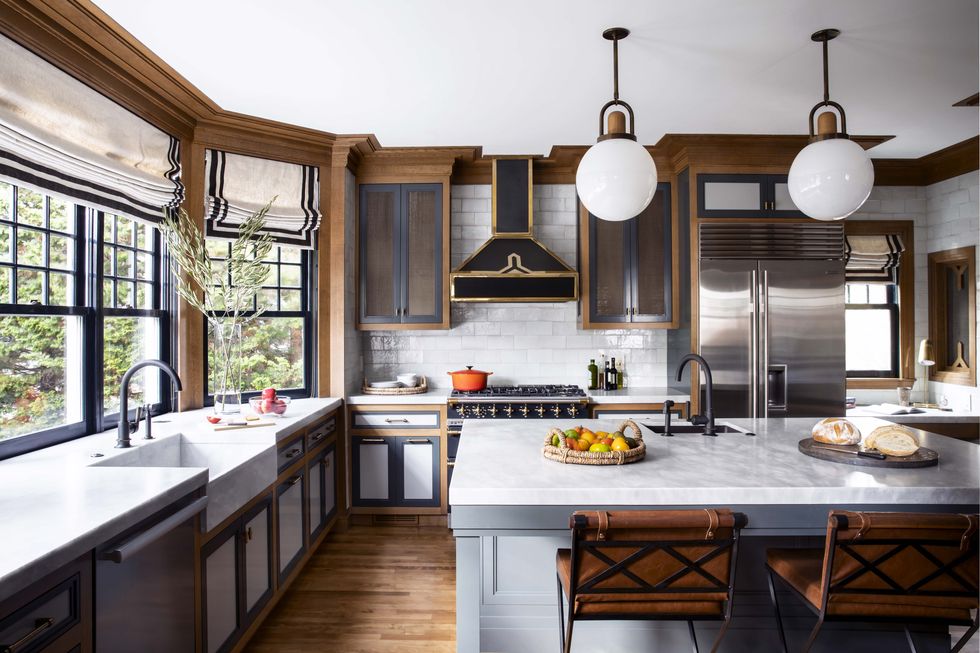If you’re looking to create content or establish a service as a Kitchen Designer, here’s a comprehensive breakdown of what you could include. This content can be used for your website, social media, or marketing materials to attract clients and showcase your expertise in designing functional and aesthetically appealing kitchens.
1. Introduction to Kitchen Design
- What is Kitchen Design? A Kitchen Designer is a professional who specializes in creating functional, efficient, and aesthetically pleasing kitchens. They focus on optimizing the layout, selecting materials, coordinating colors, and recommending appliances that suit the needs and lifestyle of the client.
- Why Hire a Kitchen Designer? A kitchen is often the heart of the home. A professional designer brings a wealth of knowledge in maximizing space, selecting quality materials, and creating a cohesive design. They ensure that the final design is both practical and beautiful while aligning with your budget and style preferences.
2. Services Offered by a Kitchen Designer
- Full Kitchen Design Services: Comprehensive design from concept to completion. This includes layout planning, material selection, color coordination, and appliance placement.
- Layout & Floor Plan Optimization: Creating a layout that maximizes the use of space while keeping in mind the work triangle (sink, stove, and refrigerator), traffic flow, and overall functionality.
- Cabinet & Storage Solutions: Advising on cabinet styles, materials, and organization solutions, such as pull-out drawers, built-in dividers, and pantry systems to maximize storage.
- Lighting Design: Suggesting the right combination of task, ambient, and accent lighting for your kitchen to enhance its functionality and atmosphere.
- Appliance Selection & Integration: Recommending the best appliances that suit the client's needs, from energy-efficient models to high-end brands, and integrating them seamlessly into the design.
- Material & Finishes Selection: Guiding clients in choosing countertops, backsplashes, flooring, and cabinetry finishes that match their aesthetic preferences and lifestyle.
- Budget Management: Helping clients set a realistic budget, find cost-effective solutions, and prioritize essential elements to ensure the design is within financial reach.
- Project Coordination: Working with contractors, suppliers, and other professionals to ensure the design is executed correctly and on schedule.
3. Design Process
- Initial Consultation:
This is the starting point where the designer gets to know the client’s needs, style preferences, budget, and space constraints. - Design Concept:
The designer will create preliminary sketches or 3D renderings of the kitchen to visualize the layout, materials, and overall design. - Material & Product Selection:
Once the design concept is approved, the designer helps choose the materials (e.g., countertops, cabinetry) and products (e.g., appliances, fixtures) that will bring the vision to life. - Final Design & Presentation:
A final design will be presented, including detailed floor plans, elevations, and product selections, for the client’s approval. - Project Execution & Monitoring:
Throughout the remodel or construction process, the designer oversees the project to ensure that it is executed according to plan.
4. Kitchen Design Styles
- Modern Kitchen Design:
Clean lines, minimalist approach, sleek finishes, and cutting-edge appliances. - Traditional Kitchen Design:
Warm, timeless designs with classic cabinetry, ornate details, and rich wood tones. - Transitional Kitchen Design:
A mix of modern and traditional elements, offering a timeless yet contemporary feel. - Farmhouse Kitchen Design:
A cozy, rustic style with open shelving, vintage fixtures, and natural materials. - Industrial Kitchen Design:
Exposed beams, metal finishes, and open shelving for an urban, edgy vibe. - Contemporary Kitchen Design:
Focuses on up-to-date trends, with geometric shapes, bold colors, and modern materials. - Minimalist Kitchen Design:
An emphasis on clean, simple designs with an efficient use of space and functional storage solutions.
5. Design Trends
- Color Palettes:
Discuss the latest trends in kitchen color schemes, such as muted tones, bold accents, or classic neutrals. - Smart Kitchens:
Feature the latest in smart kitchen technology, such as voice-activated appliances, smart refrigerators, and touchless faucets. - Sustainability in Kitchen Design:
Share sustainable design ideas, such as using eco-friendly materials, energy-efficient appliances, and water-saving fixtures. - Open Shelving & Floating Cabinets:
Open shelving trends are gaining popularity, with homeowners looking to display their kitchenware and add a sense of openness. - Hidden Appliances:
Modern designs often incorporate hidden or integrated appliances, making the kitchen look sleek and seamless.
6. Portfolio & Case Studies
- Include a portfolio of previous kitchen design projects, highlighting different styles, sizes, and budgets. Show before-and-after photos, 3D renderings, and detailed layouts to demonstrate your expertise.
- Client Testimonials:
Include positive feedback from satisfied clients. This can help build trust and credibility with potential clients.
7. Kitchen Design Tips for Homeowners
- Maximize Storage:
Ideas for utilizing every inch of kitchen space for storage, such as pull-out pantries, deep drawers, and vertical shelving. - Improve Kitchen Workflow:
Tips on creating an efficient kitchen workflow by optimizing the layout of the sink, stove, and refrigerator. - Balance Functionality & Aesthetics:
Discuss how to strike the perfect balance between a functional kitchen that works well and a stylish kitchen that aligns with the homeowner’s taste.
8. Cost Considerations
- Budget Breakdown:
A guide to help clients understand the cost of designing a kitchen, including the price of materials, appliances, labor, and potential hidden costs. - Investment Value:
Explain the potential return on investment (ROI) of a kitchen remodel, especially when it comes to adding value to the home for resale.
9. Call to Action
- Schedule a Consultation:
Invite potential clients to book a consultation with you to discuss their kitchen design needs. - Get a Free Estimate:
Offer to provide a free estimate or quote for their kitchen design project based on initial discussions.


